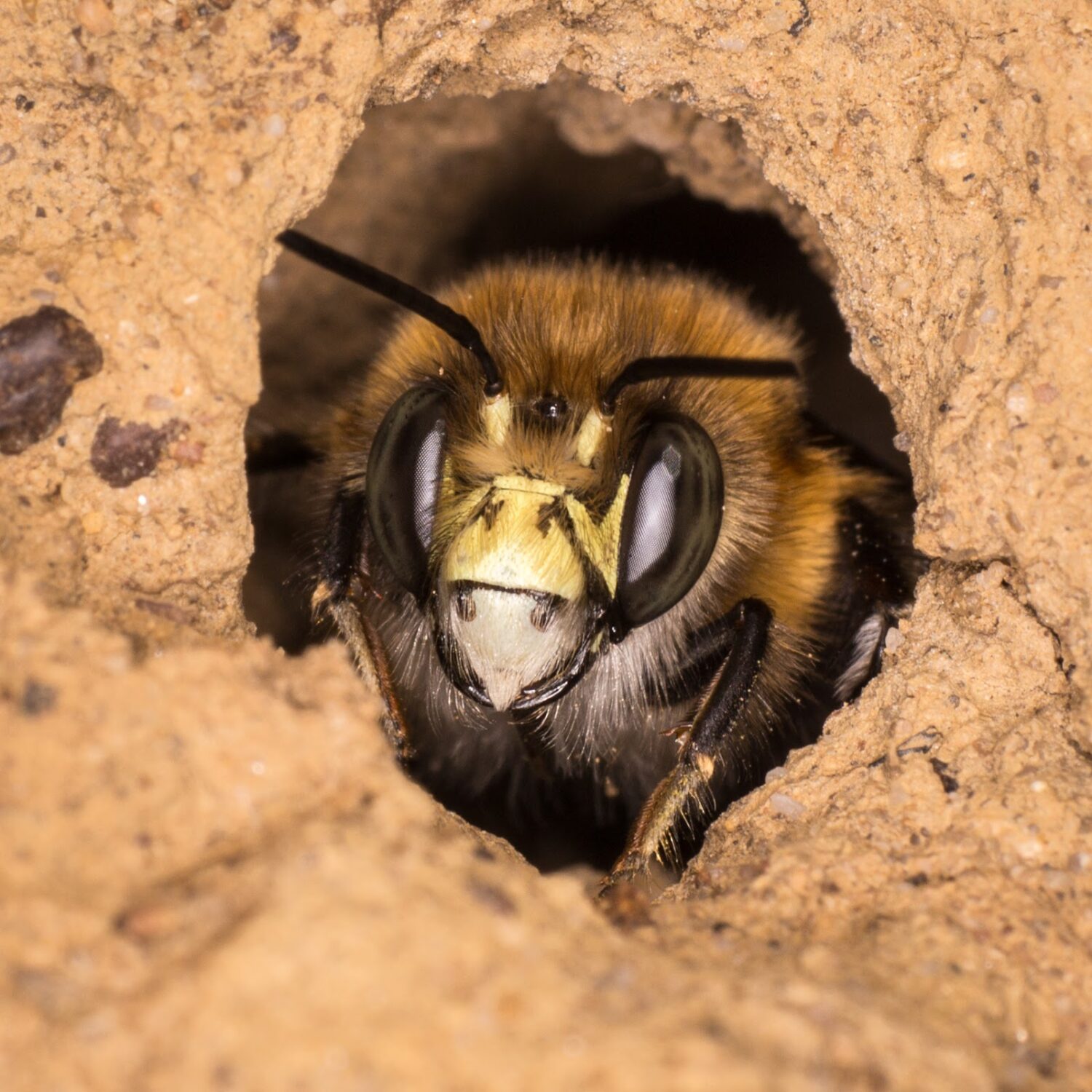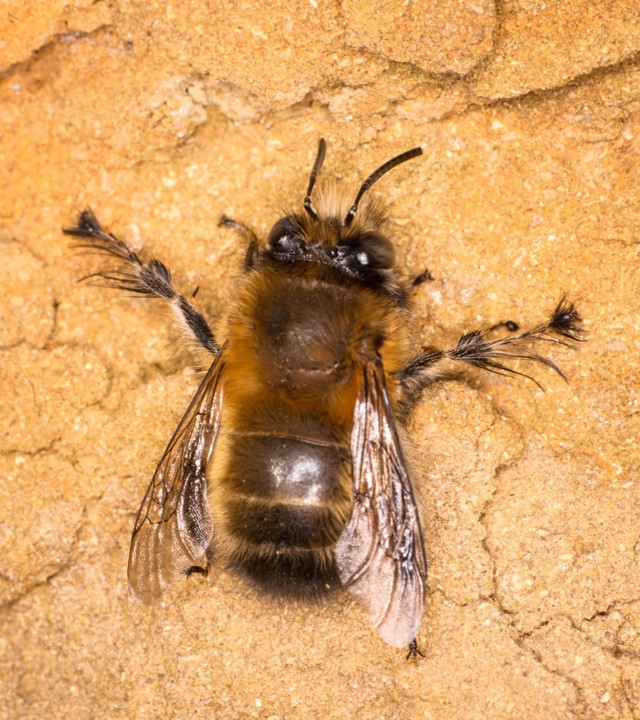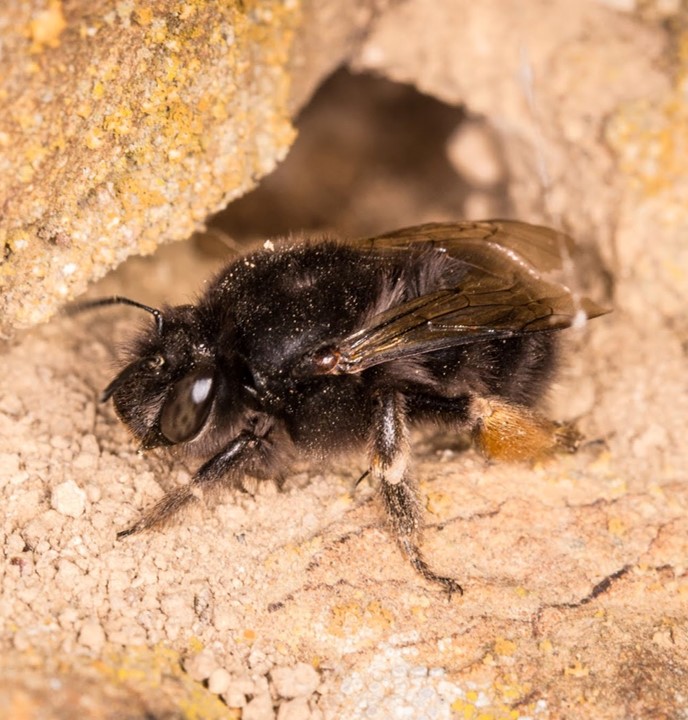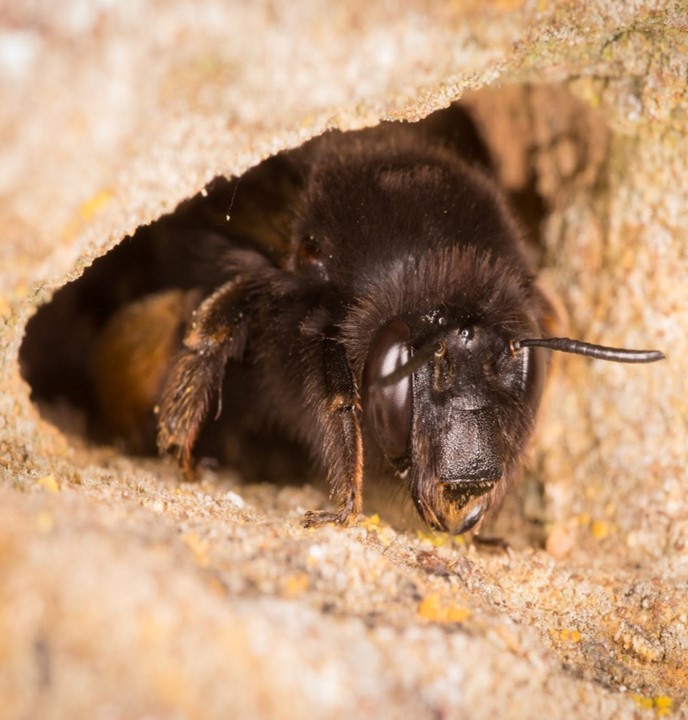Zippy and bumblebee-like, the Hairy-footed Flower Bee is one of the first bees to be out in spring.
Fast facts
- Common name(s)
- Hairy-footed Flower Bee
- Scientific name
- Anthophora plumipes
- Bee group
- One of the 'flower bees' from the genus Anthophora
- When to see it
- February – May
Description
Zippy and bumblebee-like, the Hairy-footed Flower Bee is a spring-flying solitary bee. Females are jet black with orange pollen hairs while males are brown with a yellow face and hairy middle legs.
With a long tongue, it favours deep flowers such as Primrose, Pulmonaria and Dead-nettles. The Hairy-footed Flower Bee is one of the first bees out in the year.
Identification
Due to their flurry and plump appearance, Hairy-footed Flower Bees are easily mistaken as a small bumblebee. A key clue is their flight behaviour: flower bees are zippy in flight and have a high-pitched shrill buzz.
Males
Males are brown-furred with a yellow ‘mask’ on their face. Their middle legs have feathery hairs, giving rise to the name of ‘Hairy-footed Flower Bee’.
Males are most often observed darting around flower patches in search of females.
Females
Females have jet black fur with orange hairs on their hind legs. These orange hairs make up the pollen brush where pollen is collected. Unlike males, females do not have the yellow marking on the face.
Females commonly nest in soft mortar walls and used compacted soil as nesting material.
Similar species
Also found in the North East, the Fork-tailed Flower Bee is similar to the Hairy-footed Flower Bee. However, the Fork-tailed Flower Bee is brown-furred and males do not have feathery hairs on their middle legs. Female Fork-tailed Flower Bees also have a small orange-red tail tip. Unlike Hairy-footed Flower Bees, this flower bee nests in dead wood.
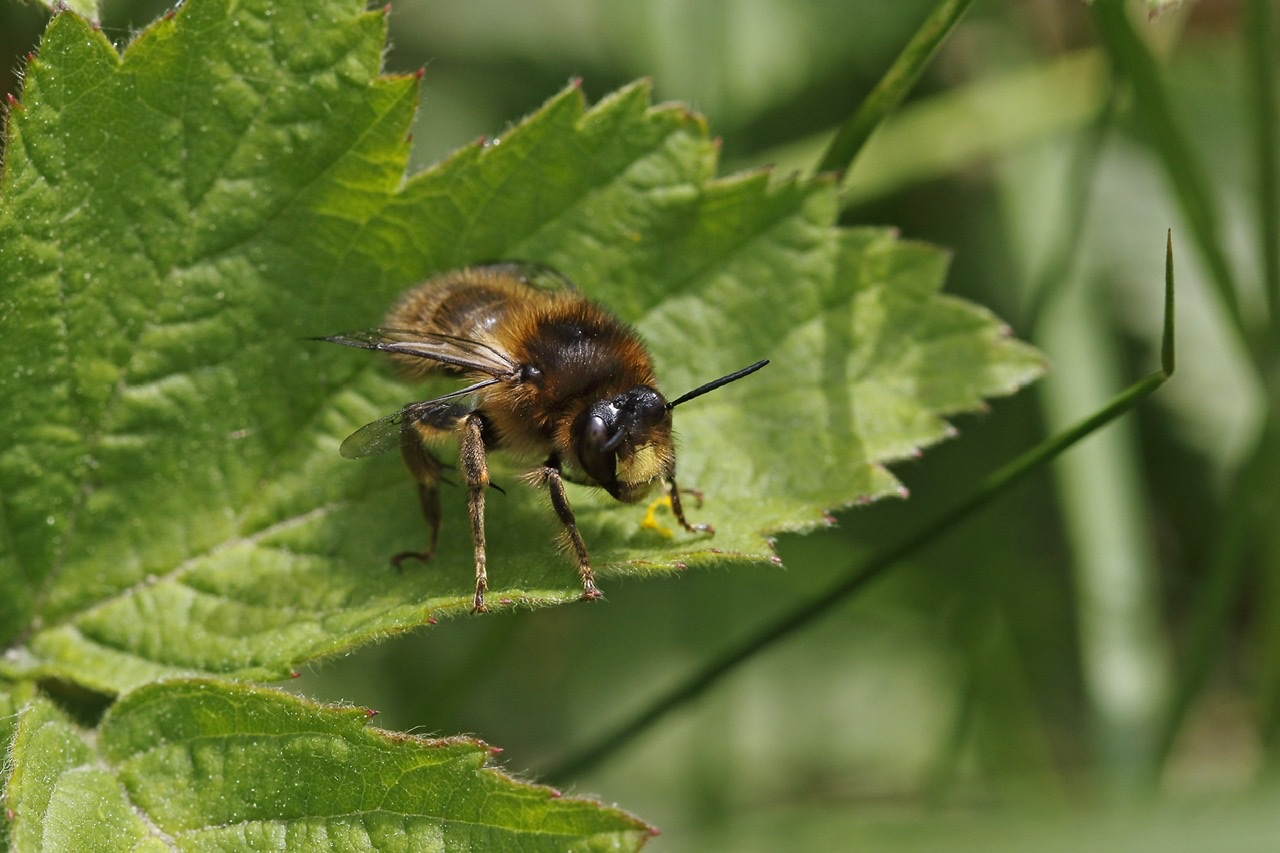
Male Fork-tailed Flower bee © Chris Barlow 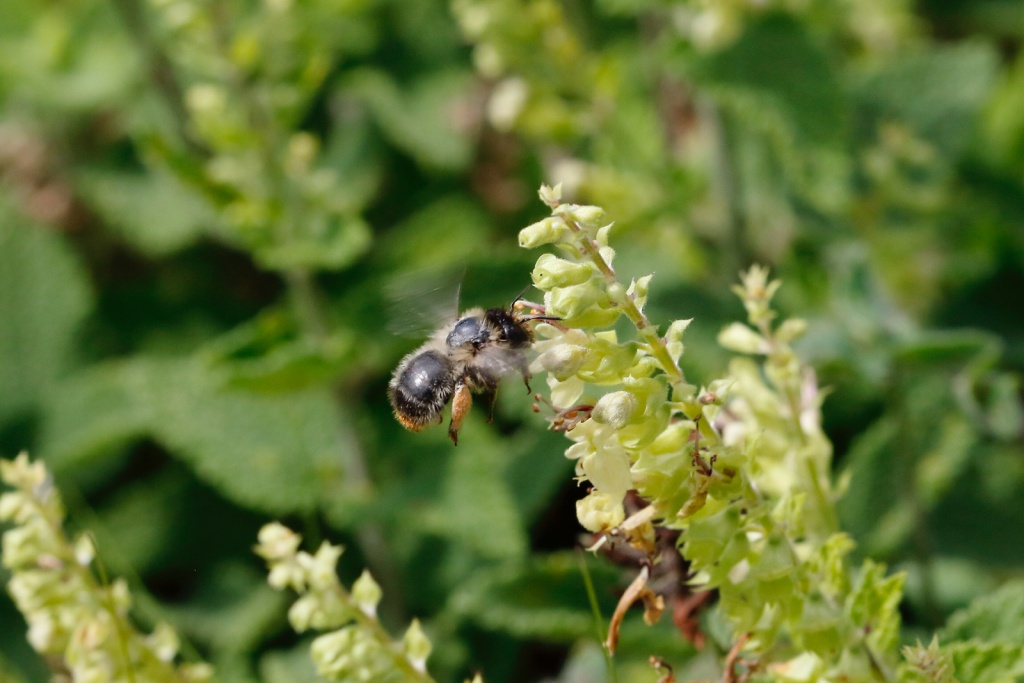
Female Fork-tailed Flower Bee © Chris Barlow
Ecology
A long-tongued bee, Hairy-footed Flower Bees visit plants with deeper flowers, such as Dead-nettles, Pulmonaria, Cowslips and Primroses. Using soil particles as nesting material, females nest in vertical, soft-rock faces such as old walls, cliffs and soft mortar. While solitary, females are often observed nesting close together in groups. Males wave their their feathery leg hairs during mating.
Regional distribution
First recorded in 2011 from Alnwick Gardens, the Hairy-footed Flower Bee is a relatively recent arrival to the North East. A scarcer species in the region, recent records are showing it is more widespread than previously thought. Records are clustered mainly around the Alnwick area with other sightings from Barnard Castle, Warkworth, and in 2021, Morpeth.
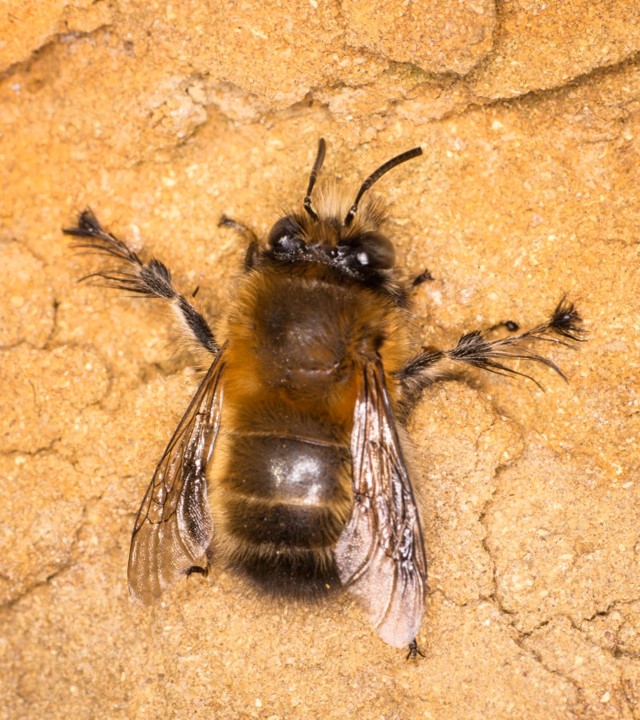
Spotted this bee?
Share your sighting with the North East Bee Hunt to contribute to the conservation and study of our region’s bees.
